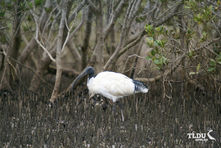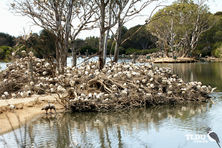
Shoppers Feedback:
Jan 17, 2017
Hello Ros,
I have now paid the invoice, but I would like to write to you just to say a big THANK YOU for getting me the Penguin!
The ChatterMate Penguin became a nice memory for me when I was in New Zealand, and I am so greatful to you for arranging so that I could have it! :-)
Thank you so much!!!!!!!!!!!
Regards,
Malin
Hi Ros,
Many thanks for your very kind email. I really appreciate your prompt reply!
I appreciate your advice regarding the decorations and customs. These are a gift for my daughter’s exchange student family so when she returns home on the weekend I will show her and see if she loves them as much as I do!
Thanks so very much again - I am truly grateful for your kind assistance.
Kind Regards
Bernadette
Ros,
Thanks again for the great customer service. It's a refreshing change!
Best regards,
Trevor
Hey Roz,
Thank you for your emails. Just loved my first order. The cute little Aussie bush critters are going to be used for an office Christmas decoration. My colleagues also liked them and talked about making an order to your site. I'll send you a photo when completed.
I'll be ordering more to send to my daughter's host family in America.
Fabulous service from you.
Kind regards,
Michelle
Thankyou. Order arrived today. One very happy grandson with his new beastly binoculars.
Regards,
Irene
- Home
- Wild Wonders
- Shop
- Aromas of Australia
- Australian Made
- Books
- Book Marks
- Christmas Decoration Sale
- Christmas Decorations
- Clocks
- Drink Holders
- Garden & Outdoor
- Gift Wrapping & Cards
- Home & Giftware
- Jewellery
- Keyrings
- New Products
- Pencils & Pen Holders
- Photo Frames
- Plush Toys
- Plush with Sound
- Sheepskin Rugs
- Stationery
- Stone Carvings
- Toys & Games
- Travel Goods
- Wedding
- Wild Figurines
- Wildlife Safety Products
- Wind Chimes
- Wine Charms
- View All Products
- Wildlife
- Australiana
- Explore
- Contact Us
Australian White Ibis

Quick Facts
| Length: | - |
| Height: | 72 cm |
| Weight: | - |
| Colour: | White body, black head and neck |
| Habitat: | Swamps, lagoons, floodplains and grasslands. Urban parks and gardens |
| Food: | Terrestrial and aquatic invertebrates. Crayfish and mussels are favourite foods |
| Predators: | - |
| Status: | - |
The Australian White Ibis is identified by its almost entirely white body plumage and black head and neck. The head is featherless and its black bill is long and down-curved. During the breeding season the small patch of skin on the under-surface of the wing changes from dull pink to dark scarlet. Adult birds have a tuft of cream plumes on the base of the neck. Females differ from males by being slightly smaller, with shorter bills. Young birds are similar to adults, but have the neck covered with black feathers. In flight, flocks of Australian White Ibis form distinctive V-shaped flight patterns. Another common name for this bird is Sacred Ibis, but this more appropriately refers to a closely related African species.
The Australian White Ibis is common and widespread in northern and eastern Australia, and both its range and abundance in western Australia is expanding, despite its absence from Western Australia prior to the 1950s. The species is absent from Tasmania.
The Australian White Ibis can be observed in all but the driest habitats. Preferred habitats include swamps, lagoons, floodplains and grasslands, but it has also become a successful inhabitant of urban parks and gardens.The Australian White Ibis' range of food includes both terrestrial and aquatic invertebrates and human scraps. The most favoured foods are crayfish and mussels, which the bird obtains by digging with its long bill. Mussels are opened by hammering them on a hard surface to reveal the soft body inside.
The Australian White Ibis' range of food includes both terrestrial and aquatic invertebrates and human scraps. The most favoured foods are crayfish and mussels, which the bird obtains by digging with its long bill. Mussels are opened by hammering them on a hard surface to reveal the soft body inside.
Some Australian White Ibis populations have learnt to exploit artificial foods in urban environments and are becoming pests. However, although Australian White Ibises are becoming more common in some areas, their abundance is decreasing in their natural range.
The male Australian White Ibis secures a pairing territory on a branch of a tall tree in order to attract a female. The courtship ceremony involves the male putting on a noisy display, as well as showing aggression towards other males. When a female arrives, the male attracts her by bowing from his branch. He then offers the female a twig, forging a bond when she grasps it and they begin to preen one another. Once the pair bond is cemented, the birds fly off to build a nest at another location. Australian White Ibis nest in large colonies, often with the Straw-necked Ibis. Young are born naked and helpless. One or two broods may be reared in a year.
Last Updated: Friday 31st January, 2014
BirdLife Australia - www.birdlife.org.au
BUSH e-TELEGRAPH
Signup for our monthly newsletter the "e-Telegraph"
Quick Links
Home | The Beginning | About The Land Down Under | Wild Wonders | Advertise on Wild Wonders | Christmas Decoration Sale | Christmas Tree Decorations | Drink Holders | Plush with Sound | Stone Carvings | Wildlife Wine Charms | Freebies | Australian Wildlife | Help Our Wildlife | Australiana | Photo of the Month | Explore The Land Down Under | Contact Us | Legal Notices


